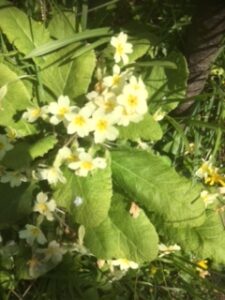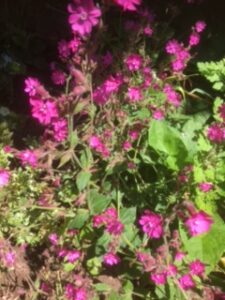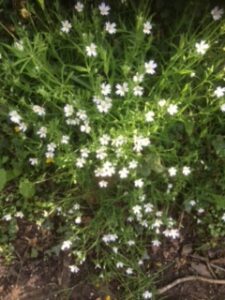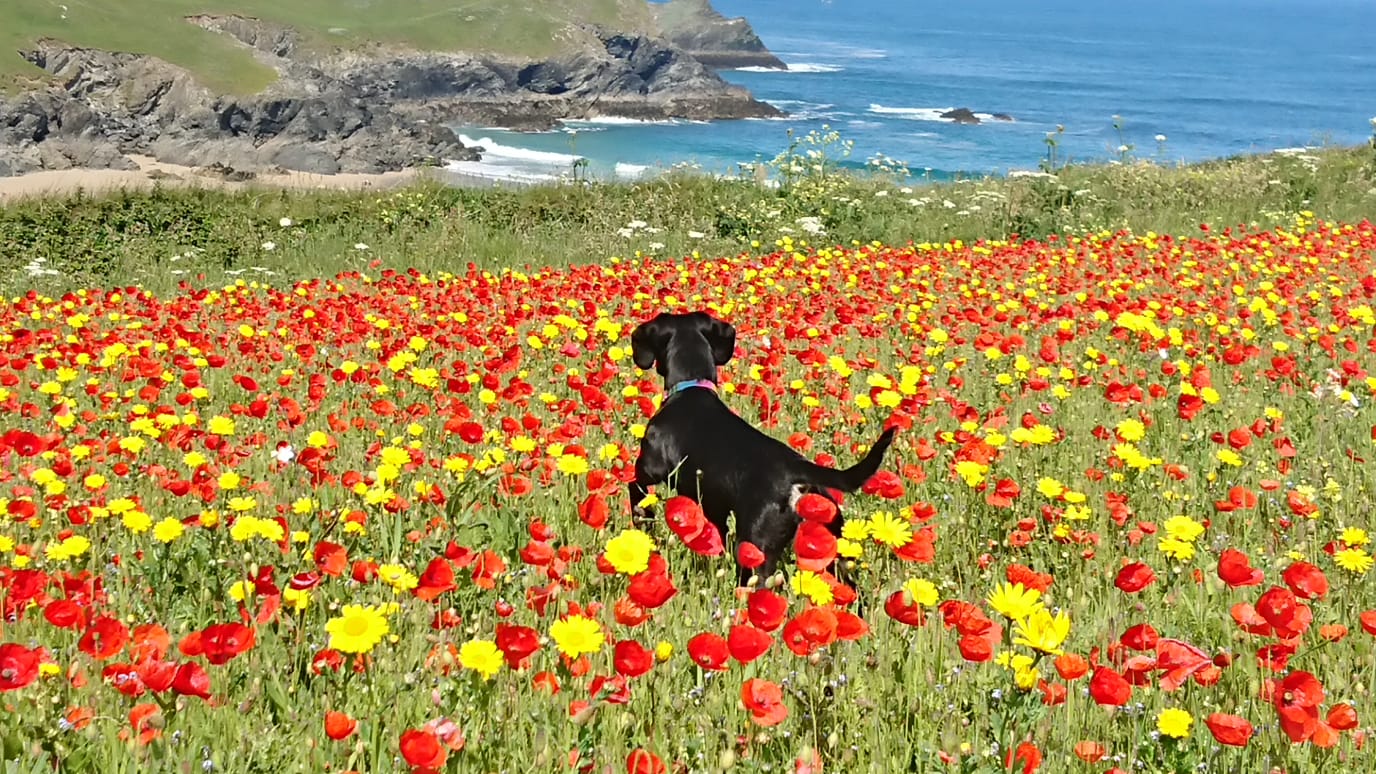17 June 2021
Walks
Long and short.
By Lynda Goetz
 Today I saw my first Red Admiral of the year; a reminder that in spite of everything, life goes on, with or without individual humans, with or without extended restrictions. The walk I was on was a familiar one. I was taking our dogs for their (and my) morning constitutional. Because there are three of them I tend to prefer not to have to get in the car, but simply to walk out of the gate. This does, of course, limit the novelty of the walks, but there are up to a dozen of varying lengths which I do regularly. The shortest, known as ‘round the block’, takes between 20 minutes and half an hour and is all on the road – particularly useful when winter mud makes some of the other possibilities a little unappealing. The longest takes a couple of hours.
Today I saw my first Red Admiral of the year; a reminder that in spite of everything, life goes on, with or without individual humans, with or without extended restrictions. The walk I was on was a familiar one. I was taking our dogs for their (and my) morning constitutional. Because there are three of them I tend to prefer not to have to get in the car, but simply to walk out of the gate. This does, of course, limit the novelty of the walks, but there are up to a dozen of varying lengths which I do regularly. The shortest, known as ‘round the block’, takes between 20 minutes and half an hour and is all on the road – particularly useful when winter mud makes some of the other possibilities a little unappealing. The longest takes a couple of hours.
When local acquaintances tell me they have taken their dogs to the beach or to Dartmoor, I feel I am being unimaginative as far as my walks are concerned, but on brief reflection I am not too bothered about this. It is fascinating how the countryside changes from day to day, week to week and month to month. Now, we are into what I call ‘thug weed’ time. This is when, over a period of a few weeks, we go from roadsides lined with beautiful clouds of hazy, lacy, white cow parsley to hefty, huge-leaved hogweed that is suddenly six feet tall, the nettles likewise, and the goose grass has the hedges in its rough clasp. The elegant fox-gloves are an exception and provide splashes of colour to alleviate the interwoven mass of growth. As too do the now-leggy, shiny yellow stems of buttercups. Above, the elderflowers are just about ready to pick for making delicious summer cordial. The dogs, however, can no longer easily scamper up the banks to survey the fields of sheep or check the trees for the presence of squirrels. The banks are an almost impenetrable tangle of fast-growing brambles and thug weeds; amongst which, by this stage, one has to include the thick-stemmed cow parsley. If they haven’t already, the farmers and local councils will very shortly be out with tractors and hedge trimmers to cut down all this burgeoning and excessive vegetation. (The timing of this is in fact critical as the charity Plantlife has shown[i].)

Walking is incredibly therapeutic, even though I recognise it is not everybody’s ‘thing’. (One journalist declared he was looking forward to the end of lockdown when sports other than walking would be available once more and he would no longer have to pound the streets of whichever London suburb he was living in, but I think that walking in the countryside is different). There is always something to notice, even on the dreariest of days. The Earth keeps on turning in spite of our personal problems and worries, great or small. A semi-feathered dead fledgling is a reminder of the fragility of all life; a song thrush singing its heart out in an oak tree an encouragement to grasp the moment.
Before the thug weeds and the cow parsley is probably the prettiest time for a country walk, when the bluebells, the stitchwort and the red campion form a blue, white and pink brocade on the banks and under the nascent trees: trees which are different shades of green as their leaves grow and unfurl in sequence. Sometimes you can spot a wild orchid and at this time the pale yellow primroses are prolific. Prior to that is celandine time; the delicate deeper yellow stars of this first spring flower randomly scattered underfoot. The early part of the year in this country can be distinctly grey and miserable. It is possible even then to find some small treasure to cheer a mind out of sorts or to recall a brighter occasion (as I wrote back in 2018, in an article called The Blues).

By late July and August the dusty smell of dried grasses on a hot day is one of the more notable aspects of a country walk. The heat creates stillness. Even the birds appear to have been made more soporific by the heat. I am reminded of Edward Thomas’s evocative poem Adlestrop. The dogs, apart from the youngest, move more slowly, their tongues hanging out, as they try to keep cool. There are no puddles for quick, passing refreshment. The appeal of random recces up the bank is diminished. When they return home they will collapse on their sides in the shade, before remembering they need a drink first.
This summer many will be forced, against their own wishes, to holiday in this country. Beaches will be crowded and the sun may or may not shine. Small children may feel hard to entertain or keep occupied. If they are unused to it, walking can seem boring and dull. Turn it into a treasure hunt and inquiring minds may be inspired. How about setting the challenge of finding the prettiest snail shell or biggest oak ‘apple’?
In the autumn there are nuts: acorns, hazel or cobnuts, chestnuts and polished conkers. There are even ways of telling which mice have been eating the hazelnuts depending on the type of hole that has been made[ii]. Leaves are different colours as well as different shapes. Each year these changes happen with unfailing regularity, although if you have a good memory (or good record-keeping) you may be able to recall whether it was a few days or weeks earlier in the previous year. It does seem that climate change is having an effect on these things.
Winter again. Whatever happened to those crisp, cold days when woodland ivy was rimmed with hoary, sugar crystal frost? And snow? Is the lack of this due to living in the South West or the effects of climate change? It is grey, grey, grey. The trees are still beautiful though, their outlines dark grey against the lighter clouds, their cold weather dress strangely flimsier and more see-through than their green summer garb. They do not comply with our codes. They are indifferent to our Covid, but maybe not to our climate change.

Other sports may now be on the menu again, to be enjoyed as spectators or participants, but walking has never been off the menu throughout this extremely bizarre phase of human history. We may not be permitted to sing and dance in company, but who’s to stop you alone on your walk? Well, maybe the fact that these are activities more usually enjoyed in company; but walking can be enjoyed alone or with others (socially distanced, of course!) and the dogs don’t mind either way, just so long as it happens.
[i] Countryside, Exercise and Walks


